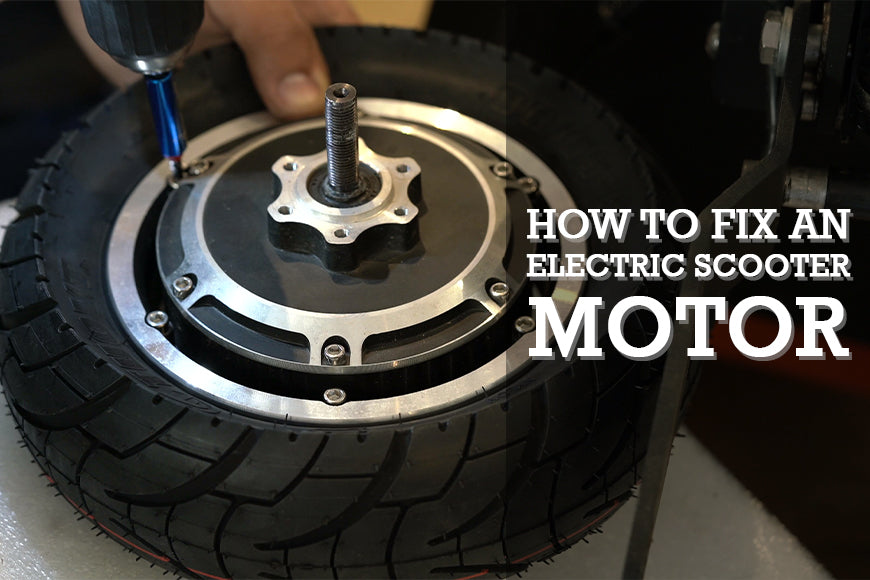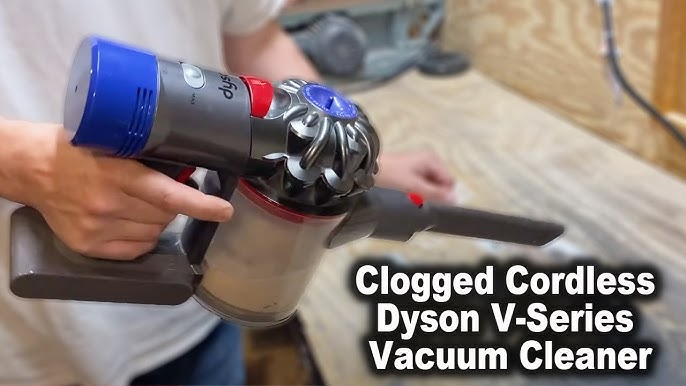How to Fix Electric Scooter Motor: Quick DIY Solutions

To fix an electric scooter motor, first diagnose the issue, then check connections and components. Replace or repair faulty parts as needed.
Electric scooters are becoming increasingly popular for their convenience and eco-friendliness. They offer a quick and efficient way to commute short distances. Sometimes, the motor may experience issues that need fixing. Knowing how to troubleshoot and repair the motor can save time and money.
Common problems include loose connections, worn-out components, or electrical faults. Proper maintenance and timely repairs ensure the scooter runs smoothly and extends its lifespan. Always follow safety guidelines and consult the scooter’s manual for specific instructions. Fixing the motor can be straightforward with the right tools and knowledge.
Introduction To Electric Scooter Troubleshooting
Electric scooters can have motor problems. The motor might not start. Sometimes, the motor makes a strange noise. It might even stop suddenly. The motor could also be weak. Regular maintenance can help. It’s smart to check the motor often. Dirt and debris can be a problem. Keep the motor area clean. Look for loose wires. Tighten them if needed. A faulty battery can cause issues too. Make sure it’s charged. The motor could overheat. Give it time to cool down. Always follow the user manual. It has helpful tips.
Safety is very important. Always turn off your scooter first. Remove the battery if you can. Wear protective gear like gloves. Use the right tools. Work in a clean and dry place. Keep kids and pets away. Avoid water near the motor. Check for sharp objects. Don’t touch hot parts. Follow the user manual for guidance. Keep a fire extinguisher nearby. Be careful with electric parts. If unsure, ask an expert for help.
Tools And Materials Needed
Repairing an electric scooter motor requires basic tools like screwdrivers, pliers, and a multimeter. Essential materials include replacement wires, connectors, and motor brushes.
Essential Toolkit For Motor Repair
You need a screwdriver, wrench, and pliers. A multimeter helps check electrical parts. Keep lubricant to loosen tight parts. A clean cloth is needed for wiping. Have insulating tape ready for safety. An Allen key set is also essential.
Sourcing Quality Replacement Parts
Buy parts from trusted suppliers. Ensure parts match your scooter model. OEM parts are often best. Online reviews can guide your choices. Check warranties for new parts. Avoid using cheap imitations. Always verify part compatibility before purchase.
Diagnosing The Motor Problem
Diagnosing the motor problem involves checking for loose connections, unusual noises, and signs of wear. Inspect the wiring and connectors for any damage to ensure proper functionality.
Symptoms Of A Faulty Electric Scooter Motor
An electric scooter motor may not work well. You may hear strange noises. The scooter might feel slow. It could stop moving suddenly. These are signs of a problem.
Performing Basic Diagnostic Tests
Check the battery first. Make sure it is fully charged. Look at the wires. Ensure they are not loose. Test the motor by spinning the wheels. Listen for odd sounds. Use a multimeter to check the motor’s voltage. A healthy motor should show normal readings.

Credit: www.youtube.com
Electrical Connections And Wiring
Check all connectors for any loose or damaged parts. Make sure each connector is tight and secure. Look for any frayed wires that might cause problems. Clean any corrosion on the connectors using a small brush. Replace any damaged connectors with new ones.
Examine the wiring for any visible damage. Use a multimeter to check the continuity of each wire. Identify any breaks or shorts in the wires. Fix these issues by using wire strippers and electrical tape. Label each wire to avoid confusion when reassembling.
Brushless Motors Vs. Brushed Motors
Brushless motors offer higher efficiency and longer lifespan, while brushed motors are simpler to repair. To fix an electric scooter motor, understanding these differences is crucial.
Differences And How They Affect Repairs
Brushless motors are more efficient and last longer. They have fewer moving parts. Brushed motors have brushes that wear out over time. This makes them need more maintenance. Brushless motors are quieter and smoother. They cost more to repair. Brushed motors are cheaper but need more frequent repairs.
Specific Repair Tips For Each Type
For brushless motors, check the controller and wiring. Replace faulty parts. For brushed motors, inspect the brushes. Replace worn brushes. Clean the commutator. Check for any debris.

Credit: www.youtube.com
Fixing Common Motor Issues
Electric scooter motors can get very hot. Overheating can cause damage. Always check if the motor is too hot to touch. Cooling down the motor is important. Stop using the scooter and let it rest. Clean any dust around the motor. Dust can block airflow. Make sure the motor has enough ventilation. Proper airflow helps in cooling down.
Noises and vibrations can be very annoying. Loose parts may cause these issues. Tighten all bolts and screws. Check if any parts are worn out. Replace them if needed. Lubricating the motor can reduce noise. Use the right lubricant for electric motors. Avoid using too much lubricant. It can attract dust and dirt.
Replacing The Motor
First, gather all your tools and parts. You will need a screwdriver, pliers, and a new motor. Make sure the scooter is off. Then, remove the deck to access the motor.
Unplug the motor’s wires carefully. Remove the bolts holding the motor. Take out the old motor slowly. Place the new motor in the same spot. Secure it with the bolts you removed.
Reconnect the wires to the new motor. Double-check all connections. Put the deck back on the scooter. Tighten all screws and bolts. Your motor is now replaced.
Turn on your scooter. Listen for any unusual sounds. If you hear none, proceed. Test the scooter at a low speed. Check if the motor is running smoothly. Adjust the settings if needed.
Refer to the scooter’s manual. Find the section on motor calibration. Follow the steps provided there. This ensures the motor runs at its best. Always wear safety gear while testing. Enjoy your smooth ride!
Testing And Final Adjustments
First, make sure the scooter is on a flat surface. Turn on the scooter using the power button. Slowly twist the throttle to start the motor. Check if the motor runs smoothly. Listen for any strange noises. Watch if the scooter moves without jerks. If everything seems fine, take a short ride. Wear a helmet for safety. Ride at a slow speed first. Test the brakes to ensure they work well.
Adjust the throttle if needed. You can tighten or loosen the screws. Make small changes and test each time. Check the alignment of the wheels. They should be straight and balanced. Look at the battery connections. Ensure they are tight and secure. Test the lights and indicators. They should work properly. Finally, keep the scooter clean. Dirt can affect performance.
Maintenance Tips To Prevent Future Issues
Keep your electric scooter clean. Dirt and dust can damage the motor. Use a soft cloth to wipe it. Check for loose parts. Tighten screws and bolts. Inspect the wires. Replace damaged wires quickly.
Store your scooter in a dry place. Moisture can harm the motor. Keep it away from direct sunlight. Sunlight can fade the color. Use a cover for protection. Avoid overcharging the battery. Follow the manufacturer’s instructions.

Credit: turboant.com
When To Seek Professional Help
Experiencing persistent issues with your electric scooter motor? Seek professional help if troubleshooting steps fail or if unfamiliar with electrical components. Expert assistance ensures safe and efficient repairs, preventing further damage.
Limitations Of Diy Repairs
Some issues need special tools and skills. Trying to fix complex problems may cause more damage. DIY repairs are fine for small issues. For example, replacing a simple part. But, serious motor problems need an expert. Incorrect repairs can void the warranty. Safety is another concern. Professional help ensures the scooter is safe to ride. It may cost more, but it is worth it.
Finding A Reliable Repair Service
Ask friends for recommendations. Read online reviews to find trusted services. Look for certified repair shops. Check if they offer a warranty on repairs. Compare prices but do not choose the cheapest. Quality is more important. Ensure the service uses original parts. Call and ask questions to gauge their expertise. A good repair service saves time and money.
Conclusion
Fixing an electric scooter motor can be simple with the right steps. Follow the guide, troubleshoot systematically, and ensure safety. Regular maintenance will keep your scooter running smoothly. Remember, timely repairs extend the lifespan of your scooter. Enjoy a hassle-free ride by addressing issues promptly and effectively.

